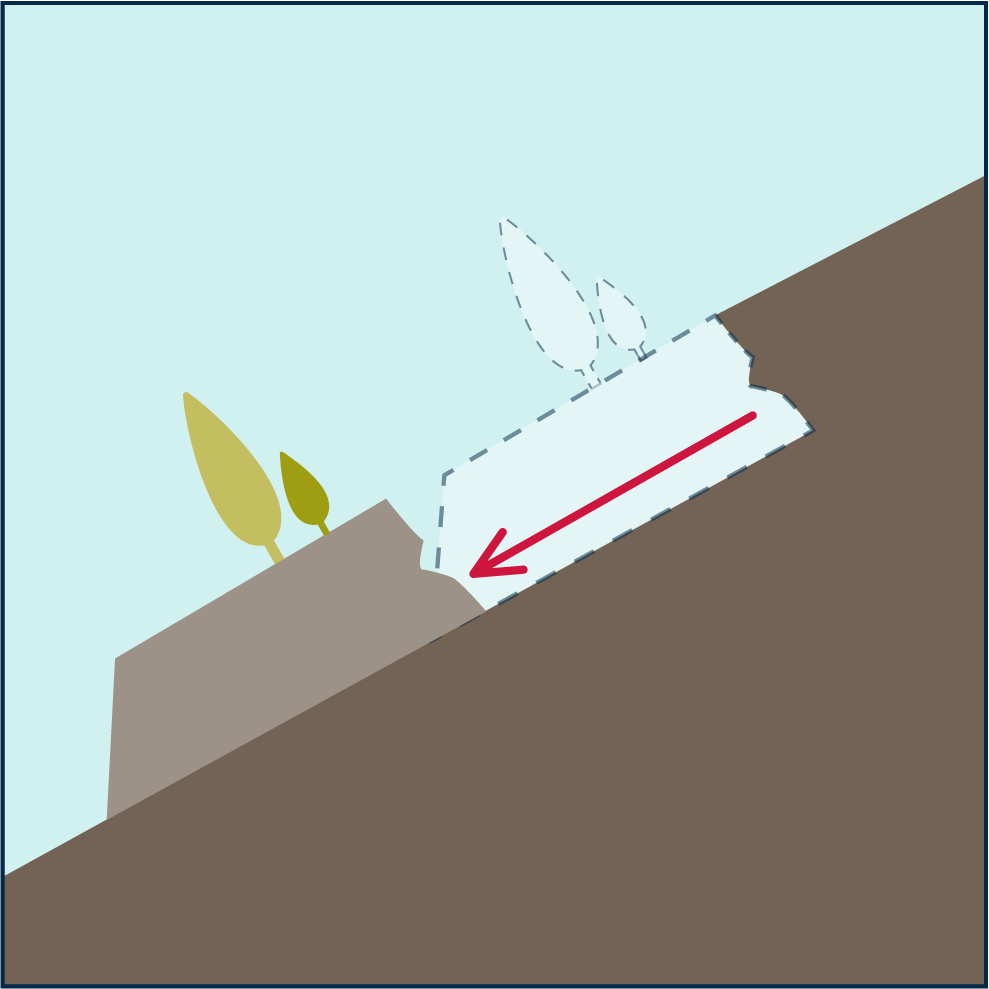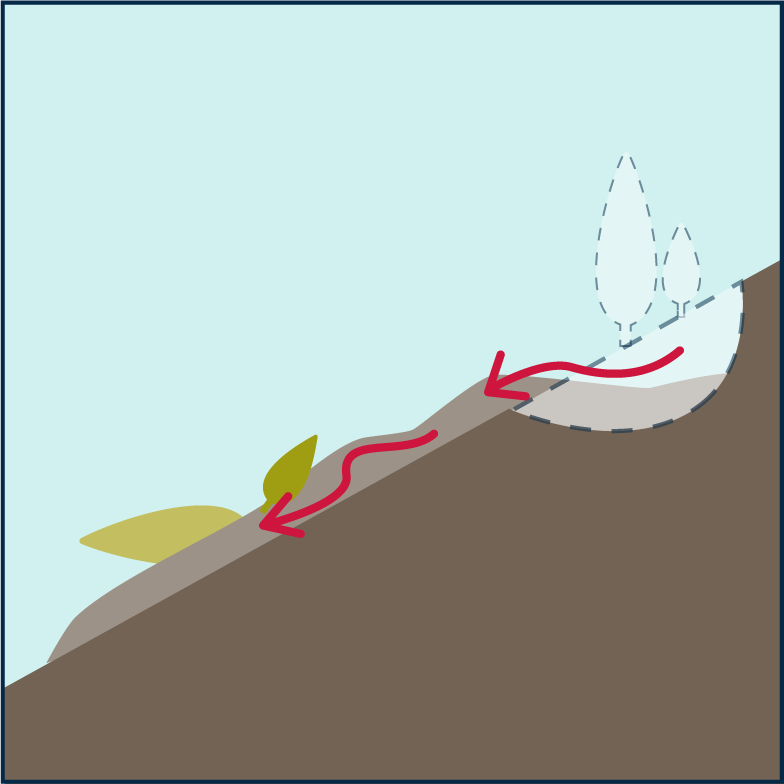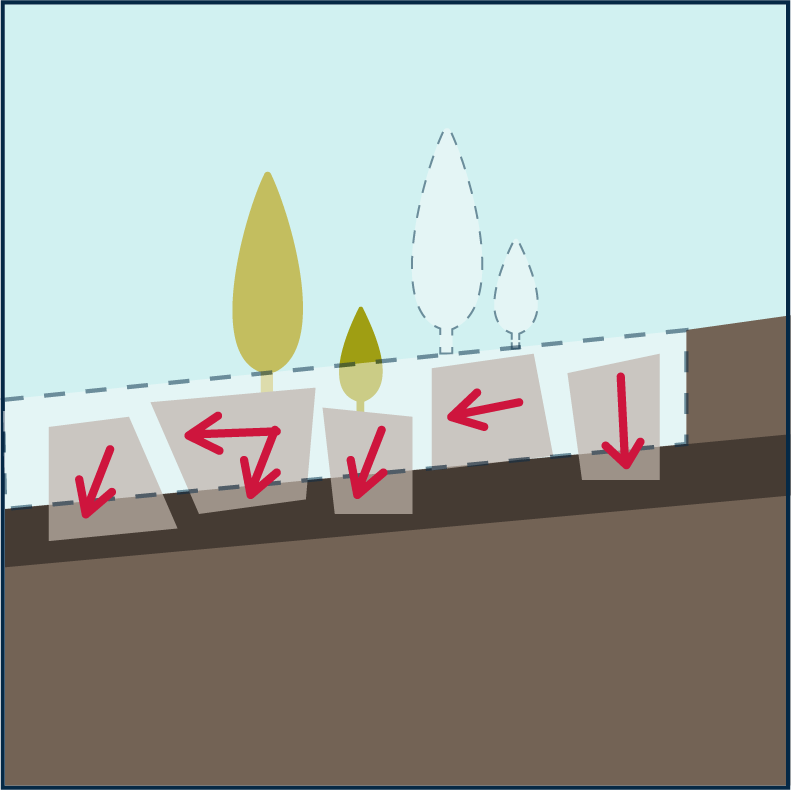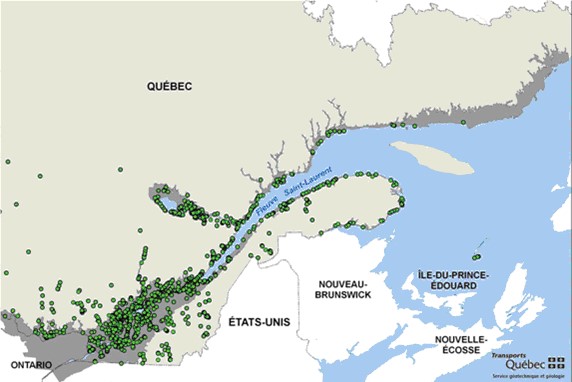Landslides
Ground movements involve the displacement of a mass of soil, rock or snow with a volume up to several million cubic metres, at a relatively fast rate.
These natural phenomena can take different forms, such as landslides, rock and ice falls or snow avalanches. However, this page focuses solely on the effects of climate change on landslides.
Quebec is exposed to various kinds of ground movements due to the diversity of its geological environments. Landslides are most common type, especially in areas where the majority of the population lives, due to the frequent presence of clay deposits in the soil.
Types of landslides

A landslide is the movement of relatively intact masses of material down an unstable slope.

A “Flow” is a downward movement of sediment or stone that is similar to the movement of a fluid.

A “Spread” refers to the lateral movement of blocks of sediment or rock along a gentle slope.
Landslides in Quebec
In Quebec, landslides are the type of natural disaster causing the greatest number of fatalities. These events can occur suddenly and can be very dangerous, particularly debris flows, which move quickly and have a large volume. A case in point is Canada’s largest recorded landslide, which occurred in the municipality of Saint-Alban, near Québec City, in 1894. It caused 4.62 million square metres of debris to slide—the equivalent of about 80 city blocks.
In Quebec, nearly a hundred cases of soil instability are reported to municipal authorities every year. Most of these occur in spring and autumn and cover a small area. However, their frequency can increase during extreme weather events, such as heavy precipitation or storms.
Factors behind landslides
Weather and climate factors
Generally speaking, a landslide occurs when the soil’s ability to resist it decreases. In most cases, water is a trigger and plays a role in two ways:
-
Intense precipitation increases pressure in the soil and reduces its resistance. This is particularly the case when the soil is already saturated with water, such as after snowmelt or after heavy rains lasting several days.
-
Wave action, which favours fluvial and coastal erosion when water levels are high, can destabilize and weaken embankments.
Other meteorological and climatic factors can also trigger landslides, such as rapid snowmelt, thawing permafrost in northern environments, and freeze-thaw cycles in coastal environments.
Other factors
Human activity can also play an important role in the occurrence of landslides in populated areas. This can be through excavation, backfilling or construction work, for example. In Quebec, it is estimated that around 40% of reported landslides are linked to poor practices associated with human activities that affect slope stability.
In addition, the steepness of the slope and the properties of the soil are key factors influencing landslides. It is estimated that around 80% of landslides occur in loose, predominantly clay deposits and along watercourses.
The presence of clay soils represents an increased risk of landslide in certain densely populated parts of Quebec, such as the St. Lawrence Lowlands, the Saguenay–Lac-Saint-Jean region and the Ottawa Valley (Figure 1).

Figure 1: Compilation of land movements (green dots, excluding those related to the 1996 Saguenay flood) in southern Quebec. The grey area corresponds to emerged marine clay deposits (from: INSPQ, undated).
Landslide-prone areas in Quebec – Vulnerability maps
The Quebec government provides vulnerability maps of the areas that are potentially at risk of landslides in southern Quebec. Although it is difficult to predict whether a landslide will occur, this tool can help keep people and property safe through better risk management.
Did you know? | How can landslides occur on flat ground in the St. Lawrence Lowlands?
Because of Leda clay! Leda clay is a highly sensitive type of sediment that was deposited in the Champlain Sea at the end of the last ice age. When disturbed, such as during heavy rainfall, it can lose its physical strength and act like a liquid. This generally leads to landslides, such as flows or spreads, which are common in areas where Leda clay makes up the soil, such as in the St. Lawrence Valley Lowlands.